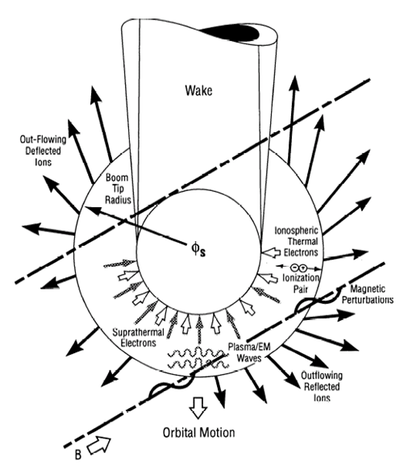It looks like you're using an Ad Blocker.
Please white-list or disable AboveTopSecret.com in your ad-blocking tool.
Thank you.
Some features of ATS will be disabled while you continue to use an ad-blocker.
Revisiting the NASA STS-75 & STS-80 Mission Footage (Warning: The following may contain science cont
page: 1share:
After doing quite a bit of reading, research and thinking, I hope I can offer some science that may back the video evidence gathered by the shuttle
missions of STS-75 and 80.
Firstly, here is the raw STS-75 footage:
Look at some of the objects, all very similar in appearance. For a start, some seem to phase in and out of the visible spectrum*(the use of the phrase "visible spectrum" is a loosely based theory in this case). The word dimension could also be used..
Now to the STS-80 footage. The same phenomena seems to occur (similar shaped/reactive objects), however there are notably less objects/anomalies on this occasion. In this case it seems the lightning storms ocuring below draw the objects in. Or perhaps, the lightning is some type of side effect of the objects interactive with the upper atmosphere?
I have also added still images (below) taken from the videos to demonstrate the similarity of the objects from both missions.
STS-75 Still Images

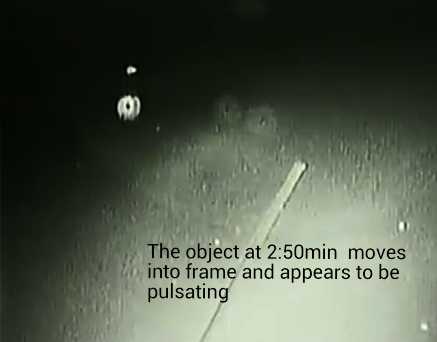
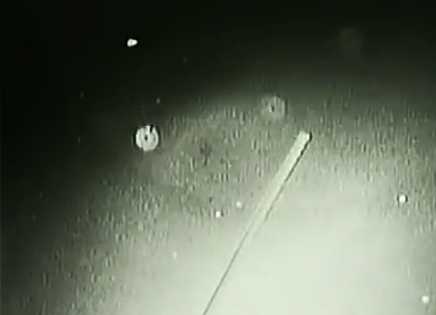
STS-80 Still Images

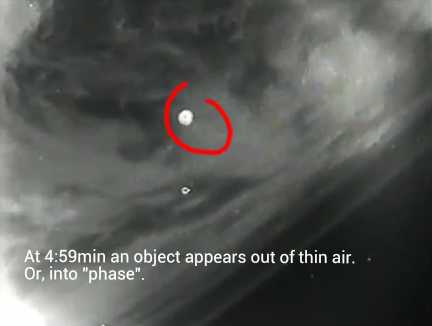
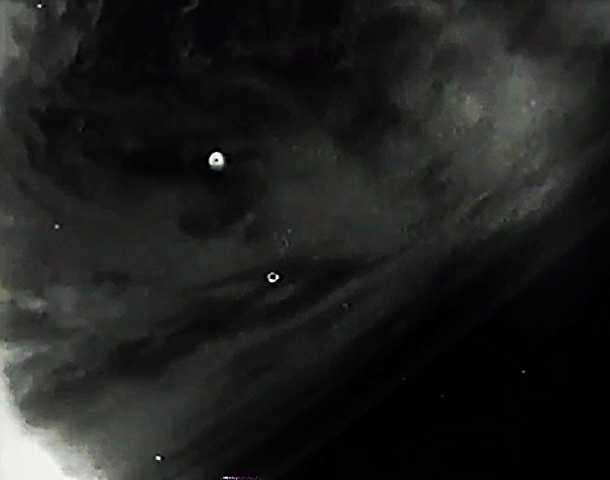
After tracking this object for several minutes, the camera operator notices more objects/anomalies moving in formation:
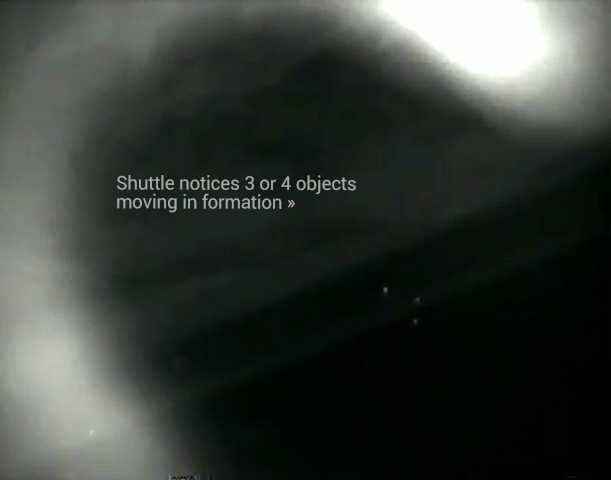
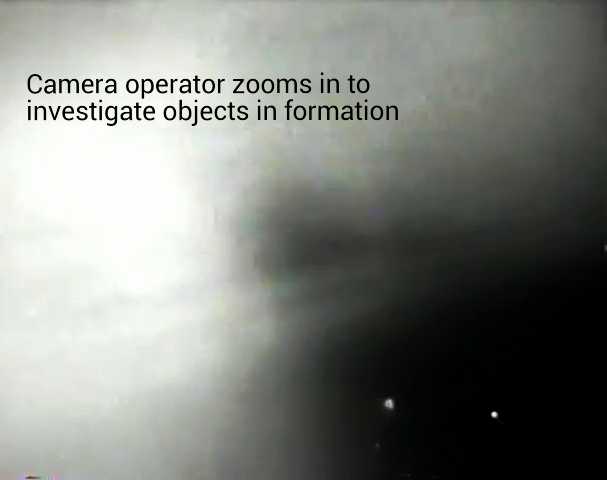

In regard to STS-75 incident consider that the tether was approx 12 miles in length. Some of the objects that pass behind the tether appear to be very large (using the tether as reference)
The experiment during the mission (STS-75) used an "electro-conducive" space tether.

Electro-dynamic Tether
en.wikipedia.org...
Electron Emitter- Tether
Ions/Ionization
Ion Sources (M/Wave)
en.wikipedia.org...
Plasma Physics
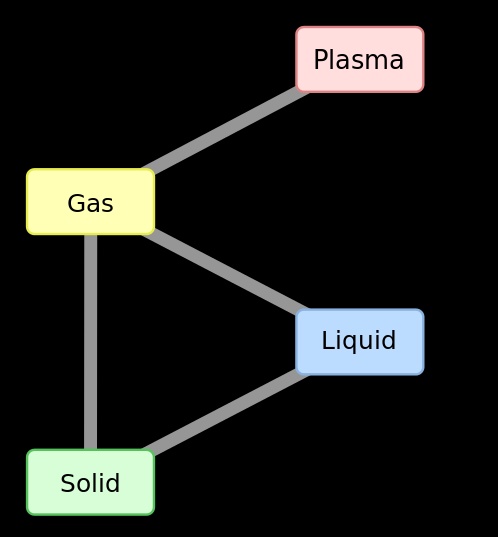
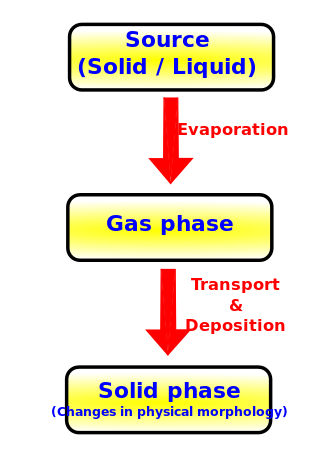
Plasma Oscillation: en.wikipedia.org...
I hope this thread has been informative. I make no conclusions as to the nature of the anomalies but I personally feel, after reading through the scientific data, a step closer to understanding.
I look forward to constructive feedback, opinions and suggestions from you all
HK007 O_0
Further Reading[b]
Electron Wake: en.wikipedia.org...
Sputter Deposition: en.wikipedia.org...
Harmonic Generation(non-linear optics): en.wikipedia.org...
Photo-ionization: en.m.wikipedia.org...
Firstly, here is the raw STS-75 footage:
Look at some of the objects, all very similar in appearance. For a start, some seem to phase in and out of the visible spectrum*(the use of the phrase "visible spectrum" is a loosely based theory in this case). The word dimension could also be used..
Now to the STS-80 footage. The same phenomena seems to occur (similar shaped/reactive objects), however there are notably less objects/anomalies on this occasion. In this case it seems the lightning storms ocuring below draw the objects in. Or perhaps, the lightning is some type of side effect of the objects interactive with the upper atmosphere?
I have also added still images (below) taken from the videos to demonstrate the similarity of the objects from both missions.
STS-75 Still Images



STS-80 Still Images



After tracking this object for several minutes, the camera operator notices more objects/anomalies moving in formation:



In regard to STS-75 incident consider that the tether was approx 12 miles in length. Some of the objects that pass behind the tether appear to be very large (using the tether as reference)
The experiment during the mission (STS-75) used an "electro-conducive" space tether.

Electro-dynamic Tether
en.wikipedia.org...
Electron Emitter- Tether
Flowing Plasma ion Collection Model
The electrons are traveling at approximately 188 km/s throughout LEO. This means that the orbiting body is traveling faster than the ions and slower than the electrons, or at a mesosonic speed. This results in a unique phenomenon whereby the orbiting body 'rams' through the surrounding ions in the plasma creating a beam like effect in the reference frame of the orbiting body.
There are three active electron emission technologies usually considered for EDT applications: hollow cathode plasma contactors (HCPCs), thermionic cathodes (TCs), and field emitter arrays (FEAs). System level configurations will be presented for each device, as well as the relative costs, benefits, and validation.
Dialectric Relaxation
en.wikipedia.org...
Dialectric Spectroscopy
Electronic polarization: This resonant process occurs in a neutral atom when the electric field displaces the electron density relative to the nucleus it surrounds.
This displacement occurs due to the equilibrium between restoration and electric forces. Electronic polarization may be understood by assuming an atom as a point nucleus surrounded by spherical electron cloud of uniform charge density.
Dispersion Relation
Dispersion may be caused either by geometric boundary conditions (waveguides, shallow water) or by interaction of the waves with the transmitting medium. Elementary particles, considered as matter waves, have a nontrivial dispersion relation even in the absence of geometric constraints and other media.
en.m.wikipedia.org...
Particle Diffraction
Quantum theory tells us that every particle exhibits wave properties. In particular, massive particles can interfere and therefore diffract.
Diffraction of electrons and neutrons stood as one of the powerful arguments in favor of quantum mechanics. The wavelength associated with a particle is the de Broglie De Broglie equation wavelength.
Ions/Ionization
Ionization is the process by which an atom or a molecule acquires a negative or positive charge by gaining or losing electrons to form ions, often in conjunction with other chemical changes.[1] Ionization can result from the loss of an electron after collisions with sub atomic particles, collisions with other atoms, molecules and ions, or through the interaction with light.
en.wikipedia.org...
Ion Sources (M/Wave)
en.wikipedia.org...
Ionized Air Glow
Ionized-air glow is the fluorescent emission of characteristic blue–purple–violet light, of color called electric blue, by air subjected to an energy flux.
en.wikipedia.org...
Plasma Physics


Plasma Oscillation: en.wikipedia.org...
Electromagnetic Electron Wave
In plasma physics, an electromagnetic electron wave is a wave in a plasma which has a magnetic field component and in which primarily the electrons oscillate.
In an unmagnetized plasma, an electromagnetic electron wave is simply a light wave modified by the plasma. In a magnetized plasma, there are two modes perpendicular to the field, the O and X modes, and two modes parallel to the field, the R and L waves.
en.wikipedia.org...
Plasma acceleration/plasma fields/ionization[b]
A plasma consists of fluid of positive and negative charged particles, generally created by heating or photo-ionizing (direct / tunneling / multi-photon / barrier-suppression) a dilute gas. Under normal conditions the plasma will be macroscopically neutral (or quasi-neutral), an equal mix of electrons and ions in equilibrium. However, if a strong enough external electric or electromagnetic field is applied, the plasma electrons, which are very light in comparison to the background ions (at least by a factor of 1836), will separate spatially from the massive ions creating a charge imbalance in the perturbed region. A particle injected into such a plasma would be accelerated by the charge separation field, but since the magnitude of this separation is generally similar to that of the external field, apparently nothing is gained in comparison to a conventional system that simply applies the field directly to the particle. But, the plasma medium acts as the most efficient transformer (currently known) of the transverse field of an electromagnetic wave into longitudinal fields of a plasma wave.
en.wikipedia.org...
I hope this thread has been informative. I make no conclusions as to the nature of the anomalies but I personally feel, after reading through the scientific data, a step closer to understanding.
I look forward to constructive feedback, opinions and suggestions from you all
HK007 O_0
Further Reading[b]
Electron Wake: en.wikipedia.org...
Sputter Deposition: en.wikipedia.org...
Harmonic Generation(non-linear optics): en.wikipedia.org...
Photo-ionization: en.m.wikipedia.org...
edit on 24/8/14 by Havick007 because: (no reason given)
Not debunking or anything, I find this stuff interesting, however, people are always using the length of the tether to gauge the size of the objects
near to it.
The tether as shown is not twelve miles long. When it broke it coiled up, its much more likely to be about three miles long.
The tether as shown is not twelve miles long. When it broke it coiled up, its much more likely to be about three miles long.
Great work!
I have always noticed the circular objects not only pulsate, but also slowly rotate on their center axis, which, if they were ice particles, would be tumbling and not just spinning on 1 axis alone.
Of course the real debunkers will never address those details.
Still reading through all the material you have included in the thread, thanks for posting it all.
I have always noticed the circular objects not only pulsate, but also slowly rotate on their center axis, which, if they were ice particles, would be tumbling and not just spinning on 1 axis alone.
Of course the real debunkers will never address those details.
Still reading through all the material you have included in the thread, thanks for posting it all.
"There are a lot of things swimming in the foreground, can you describe what you're seeing?"
"err, it's just some debris, over..."
"err, it's just some debris, over..."
a reply to: weirdguy
The way they officially use "debris" to answer the "what is that" questions so often, one would think that with every piece of hardware they transport into orbit, they also carry 20 pounds of metal shavings, saw ends, and extra smaller hardware they can toss out into space alongside every space walking mission
The way they officially use "debris" to answer the "what is that" questions so often, one would think that with every piece of hardware they transport into orbit, they also carry 20 pounds of metal shavings, saw ends, and extra smaller hardware they can toss out into space alongside every space walking mission
a reply to: NoCorruptionAllowed
You also notice the gaps of silence between the crew and mission control. Possibly using their secure transmission channels at the same time as trying to transmit on the open channels.
You also notice the gaps of silence between the crew and mission control. Possibly using their secure transmission channels at the same time as trying to transmit on the open channels.
a reply to: Havick007
I'm sorry but what are we meant to be looking at here? Giant objects behind the tether? All I can see is lots of very out of focus particles very close to the lens. You can tell that they are very close to the camera because of the huge change in appearance when the camera focus changes. They are so blurred that trying to identify them is pretty pointless.
I'm sorry but what are we meant to be looking at here? Giant objects behind the tether? All I can see is lots of very out of focus particles very close to the lens. You can tell that they are very close to the camera because of the huge change in appearance when the camera focus changes. They are so blurred that trying to identify them is pretty pointless.
originally posted by: NoCorruptionAllowed
a reply to: Rob48
Some of the out of focus circular doodads also go behind the tether, which means they are far far away from the camera.
No they don't. Watch again. The "blobs" are translucent, because they are so out of focus. You can see the tether through them, of course. That doesn't mean they are behind it.


In that second one you can even see the characteristic "hole" in the centre of the blob from the shape of the lens optics!
Similar principle here. You can see the swing frame and house through the dust "orbs" but that doesn't mean the dust is behind them.

The blobs are translucent because the object creating them is tiny. (Notice you can also see the same "donut" shape in a couple of the blobs at the bottom right - just like in the STS video.)
As for "objects appearing out of thin air", how about "dust particles moving from shadow into sunlight"? I know simple explanations are a bit boring, but come on, seriously?
edit on 25-8-2014 by Rob48 because: (no reason given)
So am I understanding that the conductive wire is generating/attracting plasma? It's really fascinating...
I cant help thinking it appears like either sea life or microscopic organism, but in space. And considering plankton might be able to survive in space... is it possible sea life evolved some sort of plasma form? Or is it just electricity 'acting' like life? Or is it like viewing the origins of electricity being a part of every living system (neurotransmitters and all)! I thirst for answers
I cant help thinking it appears like either sea life or microscopic organism, but in space. And considering plankton might be able to survive in space... is it possible sea life evolved some sort of plasma form? Or is it just electricity 'acting' like life? Or is it like viewing the origins of electricity being a part of every living system (neurotransmitters and all)! I thirst for answers
I'm afraid you wasted a lot of posting time and research over what is essentially dust and debris produced by the Shuttle.
Shuttle orbiters did produce debris during their orbital operations. Shuttle astronaut Tom Jones says:
www.youtube.com...
Another source states:
debunker.com...
Shuttle orbiters did produce debris during their orbital operations. Shuttle astronaut Tom Jones says:
On every mission you see lots of debris that is released from the shuttle’s payload bay, or frozen propellant from the main engines or the thrusters that drifts along with you, in some cases for several days after you arrive in orbit. And so that little cloud of particles gets captured by the low light TV cameras on the space shuttle that are used by the ground controllers at night, and when those wind up on video, and if you don’t know the context for when those pictures were taken, those little particles might seem to you like distant stars or moving objects in space. The video I have seen in STS-80 is just that. It’s the low light TV camera capturing those ice particles in the very near field, only 10 or 20 feet away, and in the camera view they look like they are flashing, in fact they are just tumbling little ice flakes.
www.youtube.com...
Another source states:
There are more than 50 sources of ice on the shuttle, plus a steady source of debris such as insulation flakes from inside the payload bay. This includes 38 primary RCS jets and 6 vernier jets (which burn the hypergolic [self-igniting] propellants of nitrogen tetroxide and hydrazine), an air dump line, a waste water dump line, a supply water dump line, two fuel cell purge lines (the hydrogen one is always leaking water), two flash evaporators, a water spray boiler, and so forth. No surprise, then, that floating debris near the shuttle is a common sight. The particles usually (not always) spin, and depending on the axis of spin they may or may not flash, and depending on the speed of spin their flicker may or may not be picked up by the camera CCD scanner.
debunker.com...
edit on 25-8-2014 by wildespace because: (no reason given)
a reply to: wildespace
I havent wasted any time... The more you can grasp the science of what is happening in these clips, the clearer it becomes.
I havent wasted any time... The more you can grasp the science of what is happening in these clips, the clearer it becomes.
originally posted by: Havick007
a reply to: wildespace
I havent wasted any time... The more you can grasp the science of what is happening in these clips, the clearer it becomes.
What is the science behind debris particles floating around in front of the camera?
ufo hunters debunked it already
go to 3:45 mark
go to 3:45 mark
edit on 25-8-2014 by Moondoggie because: (no reason given)
originally posted by: Havick007
a reply to: wildespace
I havent wasted any time... The more you can grasp the science of what is happening in these clips, the clearer it becomes.
Does this make it clear enough?
There are your "notched translucent UFOs..." but oh dear, it's just lights and bright spots on Mir that are out of focus. The shapes in the tether videos indicate that the particles involved are out of focus "circles of confusion" revealing the shape of the optics, not having anything to do with the true shape of the light source involved. They are also translucent, so the much brighter tether will be seen through it and overwhelm the detector, making it appear to be "in front of" the circle of confusion.
a reply to: Rob48
That was a good example of out of focus blobs, but they do not match at all those ones with the tether event.
There aren't any "notches" with your examples, and I would bet they also do not rotate on their own center axis.
Seriously, answer that part. To date there has not even been an explanation of those aspects.
Sure, the tether could very well be out of focus ice particles, but no explanation will be given for several of their characteristics. This is the part that is suspect.
That was a good example of out of focus blobs, but they do not match at all those ones with the tether event.
There aren't any "notches" with your examples, and I would bet they also do not rotate on their own center axis.
Seriously, answer that part. To date there has not even been an explanation of those aspects.
Sure, the tether could very well be out of focus ice particles, but no explanation will be given for several of their characteristics. This is the part that is suspect.
edit on 25-8-2014 by NoCorruptionAllowed because: (no reason given)
a reply to: ngchunter
That is no explanation at all. Using a blinking light on that object to explain all of those things?
You don't even know all of the answers, but are jumping on the bandwagon of acceptability. That social niche that gives the thumbs up to those towing the "accepted" line/...
This is always obvious when those like you leave out lots of unanswered details. This doesn't mean that I think they are living or aliens, it means the unanswered part is not being fully explained. This behavior is quite transparent to a lot of people.
That is no explanation at all. Using a blinking light on that object to explain all of those things?
You don't even know all of the answers, but are jumping on the bandwagon of acceptability. That social niche that gives the thumbs up to those towing the "accepted" line/...
This is always obvious when those like you leave out lots of unanswered details. This doesn't mean that I think they are living or aliens, it means the unanswered part is not being fully explained. This behavior is quite transparent to a lot of people.
edit on 25-8-2014 by NoCorruptionAllowed because: (no reason given)
a reply to: NoCorruptionAllowed
I think the bit about those things being Shuttle-produced debris has been explained well. Instead of attacking those who provide answers, why not examine those answers and, if you don't agree with them, provide valid refuation?
Are people who jump on the UFO bandwagon any better than people who jump on the mainstream bandwagon?
I think the bit about those things being Shuttle-produced debris has been explained well. Instead of attacking those who provide answers, why not examine those answers and, if you don't agree with them, provide valid refuation?
Are people who jump on the UFO bandwagon any better than people who jump on the mainstream bandwagon?
a reply to: NoCorruptionAllowed
Think about what small ice particles or flakes will be doing in space: spinning on their axis and catching the light periodically as they move.
Take small spinning ice particles glinting in the sun, throw them way out of focus, add the "donut" artifact from the optics and hey presto: blinking fuzzy amoeba UFOs.
All these aspects have been explained, not least by an astronaut who has been on the damn Shuttle and knows what it looks like up there.
You seriously think there are giant UFOs up there which are being covered up by NASA, but NASA just casually releases video of them?
Sometimes, ice is just ice.
Edit: Five year old thread here.
www.abovetopsecret.com...
Look at the supposed "Donut UFO" photos towards the bottom of the first post in that thread. If you can't see that they are out-of-focus light sources hugely distorted by a lens then I've got a few dozen UFO photos to sell you myself ;-)
Think about what small ice particles or flakes will be doing in space: spinning on their axis and catching the light periodically as they move.
Take small spinning ice particles glinting in the sun, throw them way out of focus, add the "donut" artifact from the optics and hey presto: blinking fuzzy amoeba UFOs.
All these aspects have been explained, not least by an astronaut who has been on the damn Shuttle and knows what it looks like up there.
You seriously think there are giant UFOs up there which are being covered up by NASA, but NASA just casually releases video of them?
Sometimes, ice is just ice.
Edit: Five year old thread here.
www.abovetopsecret.com...
Look at the supposed "Donut UFO" photos towards the bottom of the first post in that thread. If you can't see that they are out-of-focus light sources hugely distorted by a lens then I've got a few dozen UFO photos to sell you myself ;-)
edit on 25-8-2014 by Rob48 because: (no reason
given)
originally posted by: NoCorruptionAllowed
a reply to: ngchunter
That is no explanation at all. Using a blinking light on that object to explain all of those things?
You're missing the point; the shape itself proves that the objects were small, close in to the camera and out of focus. They change in brightness because they're tumbling (or in this case because they literally are blinking lights on a fixed space station but that's to demonstrate this effect for you on a known object you can't claim is anomalous) and variably bright, but the overall shape doesn't change because they're out of focus and the circle of confusion is showing the shape of the optics, not the objects. This is the basic misunderstanding that exists about these videos which the Mir footage above proves.
You don't even know all of the answers,
I never claimed to "know all the answers." That's a cop out cliche canard, but I know this answer, especially from doing a lot of photography using an optic that has a central obstruction like that creating donut shapes in out of focus objects.
edit on 25-8-2014 by ngchunter because: (no
reason given)
new topics
-
George Knapp AMA on DI
Area 51 and other Facilities: 1 hours ago -
Not Aliens but a Nazi Occult Inspired and then Science Rendered Design.
Aliens and UFOs: 1 hours ago -
Louisiana Lawmakers Seek to Limit Public Access to Government Records
Political Issues: 4 hours ago -
The Tories may be wiped out after the Election - Serves them Right
Regional Politics: 5 hours ago -
So I saw about 30 UFOs in formation last night.
Aliens and UFOs: 7 hours ago -
Do we live in a simulation similar to The Matrix 1999?
ATS Skunk Works: 8 hours ago -
BREAKING: O’Keefe Media Uncovers who is really running the White House
US Political Madness: 8 hours ago -
Biden--My Uncle Was Eaten By Cannibals
US Political Madness: 9 hours ago -
"We're All Hamas" Heard at Columbia University Protests
Social Issues and Civil Unrest: 9 hours ago -
The good, the Bad and the Ugly!
Diseases and Pandemics: 11 hours ago
top topics
-
BREAKING: O’Keefe Media Uncovers who is really running the White House
US Political Madness: 8 hours ago, 22 flags -
Biden--My Uncle Was Eaten By Cannibals
US Political Madness: 9 hours ago, 18 flags -
George Knapp AMA on DI
Area 51 and other Facilities: 1 hours ago, 15 flags -
African "Newcomers" Tell NYC They Don't Like the Free Food or Shelter They've Been Given
Social Issues and Civil Unrest: 14 hours ago, 12 flags -
Two Serious Crimes Committed by President JOE BIDEN that are Easy to Impeach Him For.
US Political Madness: 17 hours ago, 9 flags -
Russia Flooding
Fragile Earth: 16 hours ago, 7 flags -
"We're All Hamas" Heard at Columbia University Protests
Social Issues and Civil Unrest: 9 hours ago, 7 flags -
911 emergency lines are DOWN across multiple states
Breaking Alternative News: 17 hours ago, 7 flags -
Russian intelligence officer: explosions at defense factories in the USA and Wales may be sabotage
Weaponry: 13 hours ago, 5 flags -
So I saw about 30 UFOs in formation last night.
Aliens and UFOs: 7 hours ago, 5 flags
active topics
-
George Knapp AMA on DI
Area 51 and other Facilities • 8 • : AW5150 -
Russian intelligence officer: explosions at defense factories in the USA and Wales may be sabotage
Weaponry • 161 • : charlest2 -
Alabama Man Detonated Explosive Device Outside of the State Attorney General’s Office
Social Issues and Civil Unrest • 55 • : Vermilion -
Not Aliens but a Nazi Occult Inspired and then Science Rendered Design.
Aliens and UFOs • 4 • : BernnieJGato -
Russia Flooding
Fragile Earth • 13 • : Maybenexttime -
911 emergency lines are DOWN across multiple states
Breaking Alternative News • 5 • : mysterioustranger -
Candidate TRUMP Now Has Crazy Judge JUAN MERCHAN After Him - The Stormy Daniels Hush-Money Case.
Political Conspiracies • 363 • : Annee -
"We're All Hamas" Heard at Columbia University Protests
Social Issues and Civil Unrest • 113 • : marg6043 -
The US Supreme Court Appears to Side With the January 6th 2021 Capitol Protestors.
Political Conspiracies • 47 • : EyeoftheHurricane -
British TV Presenter Refuses To Use Guest's Preferred Pronouns
Education and Media • 60 • : KrustyKrab

